Related Research Articles

Climate change adaptation is the process of adjusting to the effects of climate change. These can be both current or expected impacts. Adaptation aims to moderate or avoid harm for people, and is usually done alongside climate change mitigation. It also aims to exploit opportunities. Humans may also intervene to help adjustment for natural systems. There are many adaptation strategies or options. They can help manage impacts and risks to people and nature. The four types of adaptation actions are infrastructural, institutional, behavioural and nature-based options.

Climate change has serious impacts on the water resources in Jordan. The country needs to prepare for the impacts of climate change. Water resources in Jordan are scarce. Besides the rapid population growth, the impacts of climate change are likely to further exacerbate the problem. Temperatures will increase and the total annual precipitation is likely to decrease, however with a fair share of uncertainty. Hence, existing and new activities with the objective to minimize the gap between water supply and demand contribute to adapt Jordan to tomorrow's climate. This might be accompanied by activities improving Jordan's capacity to monitor and project meteorological and hydrological data and assess its own vulnerability to climate change.

Climate change is a critical issue in Bangladesh as the country is one of the most vulnerable to the effects of climate change. In the 2020 edition of Germanwatch's Climate Risk Index, it ranked seventh in the list of countries most affected by climate calamities during the period 1999–2018. Bangladesh's vulnerability to the effects of climate change is due to a combination of geographical factors, such as its flat, low-lying, and delta-exposed topography, and socio-economic factors, including its high population density, levels of poverty, and dependence on agriculture. The impacts and potential threats include sea level rise, temperature rise, food crises, droughts, floods, and cyclones.

Climate change in Africa is an increasingly serious threat as Africa is among the most vulnerable continents to the effects of climate change. Some sources even classify Africa as "the most vulnerable continent on Earth". Climate change and climate variability will likely reduce agricultural production, food security and water security. As a result, there will be negative consequences on people's lives and sustainable development in Africa.

The Climate and Development Knowledge Network (CDKN) works to enhance the quality of life for the poorest and most vulnerable to climate change. CDKN does this by combining research, advisory services and knowledge management in support of locally owned and managed policy processes. It works in partnership with decision-makers in the public, private and non-governmental sectors nationally, regionally and globally.
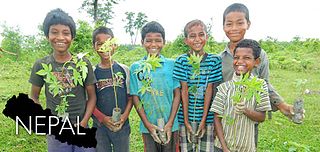
Globally, Nepal is ranked fourth in terms of vulnerability to climate change. Floods spread across the foothills of the Himalayas and bring landslides, leaving tens of thousands of houses and vast areas of farmland and roads destroyed. In the 2020 edition of Germanwatch's Climate Risk Index, it was judged to be the ninth hardest-hit nation by climate calamities during the period 1999 to 2018. Nepal is a least developed country, with 28.6 percent of the population living in multidimensional poverty. Analysis of trends from 1971 to 2014 by the Department of Hydrology and Meteorology (DHM) shows that the average annual maximum temperature has been increasing by 0.056 °C per year. Precipitation extremes are found to be increasing. A national-level survey on the perception-based survey on climate change reported that locals accurately perceived the shifts in temperature but their perceptions of precipitation change did not converge with the instrumental records. Data reveals that more than 80 percent of property loss due to disasters is attributable to climate hazards, particularly water-related events such as floods, landslides and glacial lake outburst floods (GLOFs).
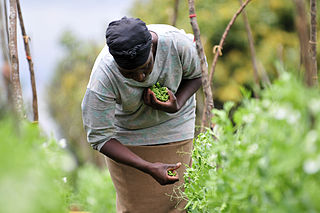
Climate change affects men and women differently. Climate change and gender examines how men and women access and use resources that are impacted by climate change and how they experience the resulting impacts. It examines how gender roles and cultural norms influence the ability of men and women to respond to climate change, and how women's and men's roles can be better integrated into climate change adaptation and mitigation strategies. It also considers how climate change intersects with other gender-related challenges, such as poverty, access to resources, and unequal power dynamics. Ultimately, the goal of this research is to ensure that climate change policies and initiatives are equitable, and that both women and men benefit from them. Climate change increases gender inequality, reduces women's ability to be financially independent, and has an overall negative impact on the social and political rights of women, especially in economies that are heavily based on agriculture. In many cases, gender inequality means that women are more vulnerable to the negative effects of climate change. This is due to gender roles, particularly in the developing world, which means that women are often dependent on the natural environment for subsistence and income. By further limiting women's already constrained access to physical, social, political, and fiscal resources, climate change often burdens women more than men and can magnify existing gender inequality.
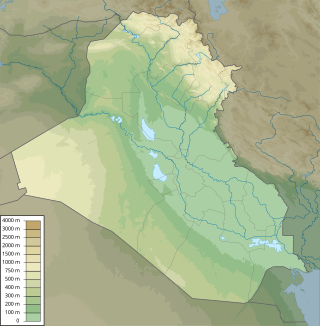
In Iraq, climate change has led to environmental impacts such as increasing temperatures, decreasing precipitation, land degradation, and water scarcity. Climate change poses numerous risks to human health, livelihoods, political stability, and the sustainable development of the nation. The combination of ecological factors, conflict, weak governance, and an impeded capacity to mitigate climate change, has made Iraq uniquely at risk to the negative effects of climate change, with the UN ranking them the 5th most vulnerable country to climate change. Rising temperatures, intensified droughts, declining precipitation, desertification, salinization, and the increasing prevalence of dust storms are challenges Iraq faces due in to the negative impacts of climate change. National and regional political instability and conflict have made it difficult to mitigate the effects of climate change, address transnational water management, and develop sustainably. Climate change has negatively impacted Iraq's population through loss of economic opportunity, food insecurity, water scarcity, and displacement.

Climate change in Ghana is impacting the people in Ghana in several ways as the country sits at the intersection of three hydro-climatic zones. Changes in rainfall, weather conditions and sea-level rise will affect the salinity of coastal waters. This is expected to negatively affect both farming and fisheries.
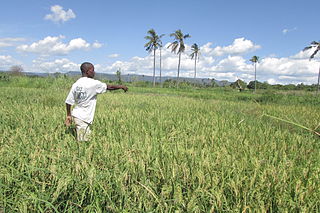
Climate change in Tanzania is affecting the natural environment and residents of Tanzania. Temperatures in Tanzania are rising with a higher likelihood of intense rainfall events and of dry spells.

In Poland, climate change has resulted in an increase of average temperature above 2 degrees Celsius compared to preindustrial levels, which is higher than the average level of climate change in Europe. Temperature has been observed to increase over the last decades due to anthropogenic activity, and without significant reductions in greenhouse gas emissions the effects of climate change will become ever more noticeable.

Iran is among the most vulnerable countries to climate change in the Middle East and North Africa (MENA). Iran contributes to about 1.8% of global greenhouse gas emissions (GHG), and is ranked 8th in greenhouse gas emissions (GHG) world wide and is ranked first in the MENA region due to its reliance on oil and natural gas. Climate change has led to reduced precipitation as well as increased temperatures, with Iran holding the hottest temperature recorded in Asia.
Ecosystem-based adaptation encompasses a broad set of approaches to adapt to climate change. They all involve the management of ecosystems and their services to reduce the vulnerability of human communities to the impacts of climate change. The Convention on Biological Diversity defines EBA as "the use of biodiversity and ecosystem services as part of an overall adaptation strategy to help people to adapt to the adverse effects of climate change".

Climate change in the Middle East and North Africa (MENA) refers to changes in the climate of the MENA region and the subsequent response, adaption and mitigation strategies of countries in the region. In 2018, the MENA region emitted 3.2 billion tonnes of carbon dioxide and produced 8.7% of global greenhouse gas emissions (GHG) despite making up only 6% of the global population. These emissions are mostly from the energy sector, an integral component of many Middle Eastern and North African economies due to the extensive oil and natural gas reserves that are found within the region. The region of Middle East is one of the most vulnerable to climate change. The impacts include increase in drought conditions, aridity, heatwaves and sea level rise.

Climate change in South Africa is leading to increased temperatures and rainfall variability. Evidence shows that extreme weather events are becoming more prominent due to climate change. This is a critical concern for South Africans as climate change will affect the overall status and wellbeing of the country, for example with regards to water resources. Just like many other parts of the world, climate research showed that the real challenge in South Africa was more related to environmental issues rather than developmental ones. The most severe effect will be targeting the water supply, which has huge effects on the agriculture sector. Speedy environmental changes are resulting in clear effects on the community and environmental level in different ways and aspects, starting with air quality, to temperature and weather patterns, reaching out to food security and disease burden.
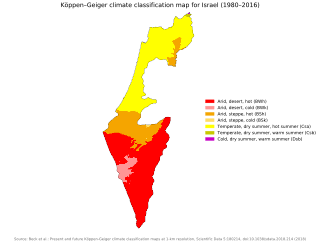
Israel, like many other countries in the Middle East and North Africa, experience adverse effects from climate change. Annual and mean temperatures are increasing in Israel, with mean temperature expected to increase between 1.6 and 1.8 °C by 2100. There is a reduction in annual precipitation and delayed winter rains. Israel is already experiencing droughts and water shortages. Heatwaves are other natural hazards expected to increase with climate change.
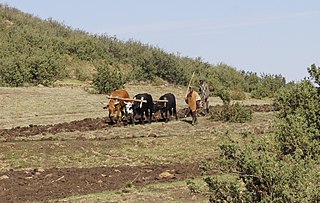
Lesotho is a country in southern Africa that is already experiencing the negative effects of climate change, including increased frequency of extreme weather, such as droughts, increased rates of soil erosion and desertification, and reduced soil fertility. Lesotho is a landlocked country that is particularly vulnerable to the negative impacts of climate variability and changes in water and food security, as well as adverse conditions to health, human settlements, and the energy sector.

Eswatini also known as Swaziland, a landlocked nation located in Southern Africa, is characterized by a subtropical climate that features wet and hot summers as well as cold and dry winters. The country has expressed concern regarding the impact of climate change on its existing social challenges, which include but are not limited to issues such as poverty, a high prevalence of HIV, and food insecurity. Furthermore, it is anticipated that climate change will significantly impede the country's development progress, by Vision 2022.

Malawi is a land-locked country in southeastern Africa situated along the southernmost arm of the East African Rift-Valley System between latitudes 9°22’ and 17°03’ south of the equator, and longitudes 33°40’ and 35°55’ east of the Greenwich meridian. It shares borders with Tanzania in the north and northeast, Mozambique in the southwest, south, and east, and Zambia in the west. Malawi is highly vulnerable to the effects of climate change as the vast majority of Malawians rely on small-scale, rain-fed agriculture, making them highly dependent on weather patterns. Climate change increasingly exacerbates droughts, flooding, and inconsistent rainfall—contributing to food insecurity and threatening to derail progress toward Malawi’s goal of self-reliance.
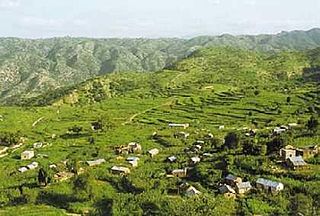
Eritrea is a small coastal nation situated along the Red Sea in the Horn of Africa. It shares borders with Sudan, Ethiopia, and Djibouti. The country spans a total land area of 124,300 square kilometers and boasts a coastline extending 1,900 kilometers. Eritrea's territorial waters in the Red Sea zone comprise approximately 120,000 square kilometers. It possesses diverse eco-geographic regions that provide unique habitats for both marine and terrestrial flora and fauna. Eritrea is one of the most vulnerable countries of the world to the adverse effects of climate change and increased climate variability has already been evidenced in the country.
References
- 1 2 "Ghana's Adaptation Communication to the United Nations Framework Convention on Climate Change" (PDF). unfccc.int. Retrieved 2023-03-21.
- ↑ website, NASA's Global Climate Change. "Climate Change Adaptation and Mitigation". Climate Change: Vital Signs of the Planet. Retrieved 2023-03-21.
- 1 2 3 4 "Climate Change Adaptation in GHANA" (PDF).
- ↑ Ameyaw, Lord; Ettl, Gregory; Leissle, Kristy; Anim-Kwapong, Gilbert (2018-11-28). "Cocoa and Climate Change: Insights from Smallholder Cocoa Producers in Ghana Regarding Challenges in Implementing Climate Change Mitigation Strategies". Forests. 9 (12): 742. doi: 10.3390/f9120742 . ISSN 1999-4907.
- ↑ "Overview". World Bank. Retrieved 2023-03-21.
- ↑ "AGRICULTURE SECTOR PROFILE" (PDF). Archived from the original (PDF) on 2023-03-21. Retrieved 2023-03-21.
- ↑ "Ghana at a glance. FAO in Ghana". www.fao.org. Food and Agriculture Organization of the United Nations. Retrieved 2023-03-21.
- ↑ Darfour, B., & Rosentrater, K. A. (2016). Agriculture and food security in Ghana. In 2016 ASABE annual international meeting (p. 1). American Society of Agricultural and Biological Engineers.
- ↑ Agodzo, Sampson K.; Bessah, Enoch; Nyatuame, Mexoese (2023). "A review of the water resources of Ghana in a changing climate and anthropogenic stresses". Frontiers in Water. 4. doi: 10.3389/frwa.2022.973825 . ISSN 2624-9375.
- ↑ Ankomah-Baffoe, Justice; Yawson, David Oscar; Okae-Anti, Daniel (2021-05-19). "Assessment of the Impacts of Climate Change on Some Hydrological Processes of The Densu River Basin, Ghana". Ghana Journal of Geography. 13 (1): 147–166. doi: 10.4314/gjg.v13i1.8 . ISSN 2821-8892. S2CID 236355690.
- ↑ Awuni, Stephen; Adarkwah, Francis; Ofori, Benjamin D.; Purwestri, Ratna Chrismiari; Huertas Bernal, Diana Carolina; Hajek, Miroslav (May 2023). "Managing the challenges of climate change mitigation and adaptation strategies in Ghana". Heliyon. 9 (5): e15491. Bibcode:2023Heliy...915491A. doi:10.1016/j.heliyon.2023.e15491. ISSN 2405-8440. PMC 10149250 . PMID 37131451.
- ↑ Oti, Jonathan Opoku; Kabo-bah, Amos T.; Ofosu, Eric (August 2020). "Hydrologic response to climate change in the Densu River Basin in Ghana". Heliyon. 6 (8): e04722. Bibcode:2020Heliy...604722O. doi:10.1016/j.heliyon.2020.e04722. PMC 7452417 . PMID 32904314.
- ↑ "CLIMATE CHANGE AND HUMAN HEALTH IN ACCRA, GHANA" (PDF).
- ↑ "Ghana's National Adaptation Plan Framework" (PDF).
- ↑ "Integrity, dedication, service, teamwork... | Environmental Protection Agency, Ghana". www.epa.gov.gh. Retrieved 2023-03-22.